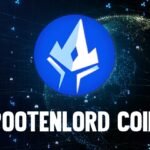As the Web3 ecosystem matures in 2025, the narrative has shifted from the mere creation of digital assets to their sophisticated design. The initial wave of tokenization was dominated by standardized templates, but today’s projects demand far more nuance. The ability to engineer a token’s specific economic and functional traits from the ground up is no longer a luxury but a strategic necessity for building sustainable and effective decentralized networks.
Moving Beyond Standard Token Models
Early token standards like ERC-20 on Ethereum were revolutionary, providing a common framework that fostered interoperability and explosive growth in DeFi. However, these foundational models are inherently generic. They do not natively account for the complex economic models required by modern projects, such as DAOs needing intricate governance mechanics, or GameFi platforms requiring dynamic reward and burn systems. This has driven a market-wide demand for assets that are purpose-built for their specific use case, moving beyond a one-size-fits-all approach.
The Strategic Imperative of Tailored Tokenomics
Tokenomics—the economic blueprint of a token—is one of the most critical factors in a project’s long-term viability. A well-designed model aligns the incentives of all participants, including the development team, users, and investors, to encourage behavior that benefits the entire ecosystem. For example, a project might implement a transaction tax to fund a treasury for ongoing development or to automatically reward long-term holders. A DeFi protocol might require a token with elastic supply mechanics to maintain a stable value. The ability to fine-tune these parameters is essential for creating a resilient and self-sustaining digital economy.
Key Parameters for Token Personalization
Modern token contracts can be imbued with a wide array of specialized features. Core customizable elements include the supply mechanism—whether it is fixed, inflationary through minting, or deflationary through burning. Transactional behavior can also be programmed, introducing fees (taxes) on buys or sells that can be redirected to liquidity pools, marketing wallets, or holder rewards. Advanced features may include anti-whale measures to prevent market manipulation, vesting contracts for team tokens to ensure long-term alignment, and direct on-chain governance rights.
The Platforms Enabling On-Chain Innovation
This trend toward bespoke assets has been accelerated by the rise of powerful no-code and low-code development platforms. These tools have democratized the field of token engineering, allowing founders and strategists without deep programming knowledge to design and deploy highly sophisticated tokens. By providing audited, modular components, these platforms mitigate the security risks associated with writing smart contracts from scratch while offering extensive configuration options. A prime example of this evolution is the suite of tools available at https://20lab.app/, which enables creators to build assets with complex, tailored features for various blockchain networks. This accessibility is fueling a new wave of on-chain innovation, allowing great ideas to be backed by equally great tokenomic design.
Disclaimer: This article is for informational purposes only and does not constitute financial, investment, or legal advice. The cryptocurrency market is highly volatile and speculative. Always conduct your own research and consult with a qualified professional before making any investment decisions.



